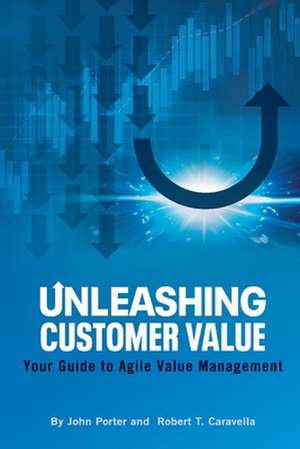Unleashing Customer Value: Your Guide to Agile Value Management
Autor John Porter, Robert Caravellaen Limba Engleză Paperback – 11 feb 2021
Preț: 103.32 lei
Nou
Puncte Express: 155
Preț estimativ în valută:
19.77€ • 20.71$ • 16.39£
19.77€ • 20.71$ • 16.39£
Carte indisponibilă temporar
Doresc să fiu notificat când acest titlu va fi disponibil:
Se trimite...
Preluare comenzi: 021 569.72.76
Specificații
ISBN-13: 9781098339081
ISBN-10: 1098339088
Pagini: 178
Dimensiuni: 150 x 224 x 13 mm
Greutate: 0.5 kg
Editura: Neil Investments Inc
ISBN-10: 1098339088
Pagini: 178
Dimensiuni: 150 x 224 x 13 mm
Greutate: 0.5 kg
Editura: Neil Investments Inc
Notă biografică
John Porter is the first, and only, person to build an integrated platform for value management, which aligns expectations, agreement, and realization of customer value across the entire customer journey. As CTO, Co-Founder and Director of DecisionLink, John and his team have engineered more value solutions than any company, while helping to solve some of the most complex business modeling challenges for some of the largest companies in the world, including ServiceNow, DocuSign, Caterpillar, VMware, and Crowdstrike. John is an inventive technologist with incredible knowledge and enthusiasm about customer value management. He has served in numerous management and leadership roles across sales, product management, and customer success at edocs, Siebel, Oracle and SAP. Bob Caravella is one of the industry's leading experts on value engineering. He built and led the business value engineering and consulting practices at Mercury Interactive and HP Software - including value model engineering, enabling the worldwide sales teams to carry on meaningful value conversations with customers, and integrating the business value models of a dozen acquired B2B software companies along the way. He is a member of the DecisionLink Management Advisory Board.
His prior experience includes managing the professional services organization for Boeing Computer Services and leading a product management function for Legent Corporation. During this stage of his career, he led research consortiums on the topic of Distributed Systems Management with the Meta Group and the University of Virginia. Bob has spoken at numerous CIO Conferences around the world and his writings have been published by IBM and Auerbach's 'Journal of Information Systems Management.'
His prior experience includes managing the professional services organization for Boeing Computer Services and leading a product management function for Legent Corporation. During this stage of his career, he led research consortiums on the topic of Distributed Systems Management with the Meta Group and the University of Virginia. Bob has spoken at numerous CIO Conferences around the world and his writings have been published by IBM and Auerbach's 'Journal of Information Systems Management.'
